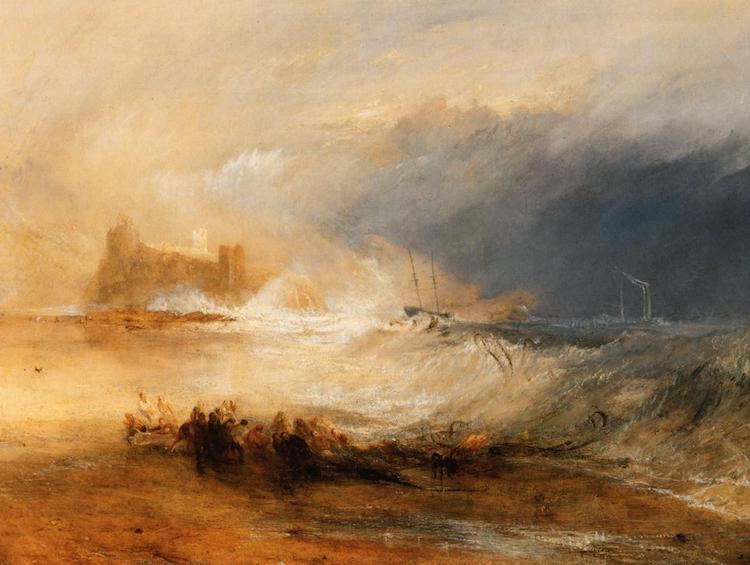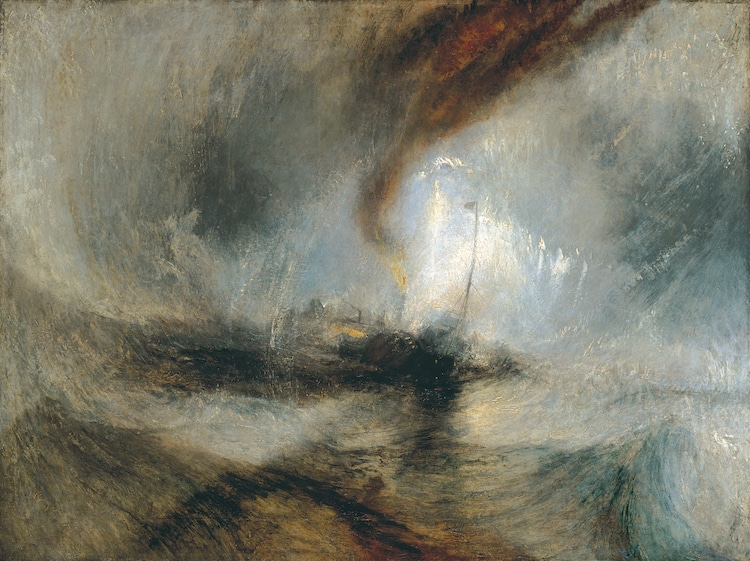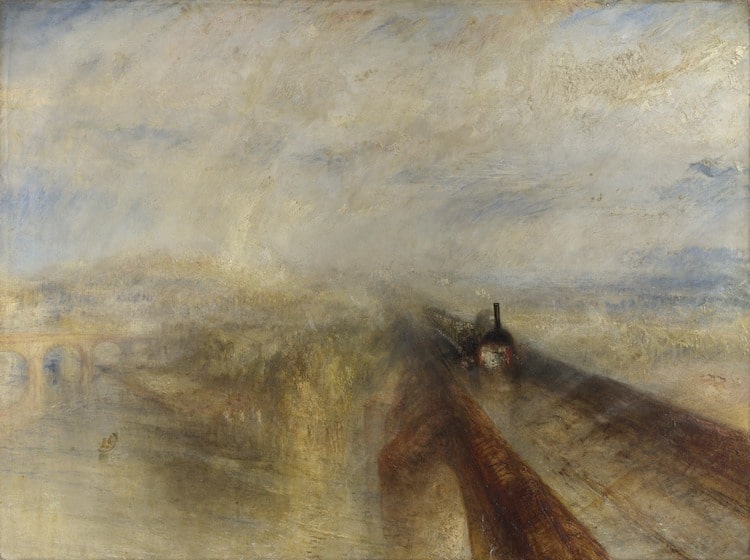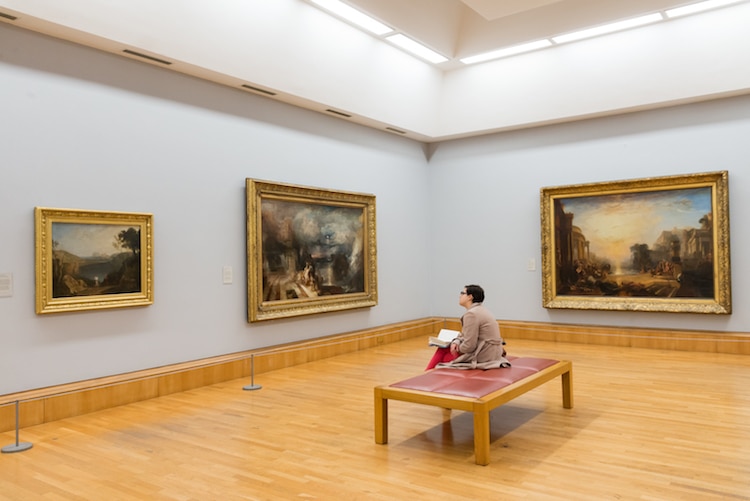Important Characteristics
Chromatic Color Palette
A key element of Turner’s painting style is his passion for color. In order to emphasize the emotion of a scene, he employed vivid hues that were rooted in realism yet radically bold. This preference for a chromatic color palette is evident in the radiant sunsets, reflective waters, and polychromatic clouds found in both his watercolors and oil paintings.

“Wreckers, Coast of Northumberland,” c. 1834 (Photo: Wikimedia Commons Public Domain)
Turner was able to achieve such rich colors through trial and error. According to Winsor & Newton, an art supply manufacturer that worked closely with Turner, he “experimented endlessly with new pigments and mixing methods,” mixing “mainly gum arabic along with traces of gum tragacanth and varying levels of sugar or honey” with the latest pigments.
Unfortunately, however, his penchant for new pigments and paints meant that he favorited desired effect over long-term durability. Because of this, many of his works have faded, making preservation a priority for Turner conservators and collectors.
Energetic Brushwork
In addition to a radical use of color, Turner also employed an avant-garde approach to brushwork. Using broad strokes and rough movements, he added energy and emotion to his compositions. This method proved to be a particularly effective way to imply speed or movement. In Snow Storm: Steam-Boat off a Harbour’s Mouth, for example, Turner’s loose brushwork captures the drama and chaos suffered by a boat during a storm.

“Snow Storm: Steam-Boat off a Harbour’s Mouth,” c. 1842 (Photo: Wikimedia Commons Public Domain)
Much like his use of color, Turner’s unique brushwork was born out of experimentation. Sometimes, Christie’s notes, he wouldn’t even employ traditional painting tools, “eschewing his brush in favor of a palette knife or even his thumb to scrape and smudge the surface of his works.”
Powerful Subject Matter
Turner employed vibrant colors and rough brushwork to capture the power and beauty of his subjects, which include landscapes, seascapes, and modern technology. Often, he combined these three muses into single paintings, like Rain, Steam, and Speed – The Great Western Railway, his most famous masterpiece.

“Rain, Steam and Speed – The Great Western Railway;,” 1834 (Photo: Wikimedia Commons Public Domain)
Doubling as a beautiful natural landscape and a study of motion, Rain, Steam, and Speed – The Great Western Railway shows a train crossing the Maidenhead Viaduct above the River Thames. As a hare races before it and a boat tranquilly floats below it, the sheer power of the locomotive is illustrated by swirls of billowing smoke and blurred forms.
Influence on Modern Art
While, today, most people view Impressionism as the catalyst of modern art, Turner’s paintings undoubtedly served as inspiration for Impressionist artists like Monet, who was introduced to his work in 1870. Because of Turner’s contributions to the movement, he is often referred to as a pioneer of modern art–even though he died over two decades before Impressionism emerged.
Additionally, traces of Turner’s influence can also be found in the oeuvre of American artist James Abbott McNeill Whistler. According to the Tate Britain, “a pattern of themes and variations begun by Turner appears to have been developed in the artistic interchange between the younger artists Whistler and Monet.” These similarities culminated in Turner Whistler Monet, a major exhibition at the museum.
Modern artists’ penchant for Turner would even survive into the 20th century, with abstract expressionist Mark Rothko comically admitting similarities between his own paintings and those of Turner. “This man Turner,” he reportedly said, “he learned a lot from me.”

Stock Photos from Alex Segre/Shutterstock
Related Articles:
How the Groundbreaking Realism Movement Revolutionized Art History
13 Revolutionary Art Movements That Have Shaped Our Visual History
20 Art History Terms to Help You Skillfully Describe a Work of Art
